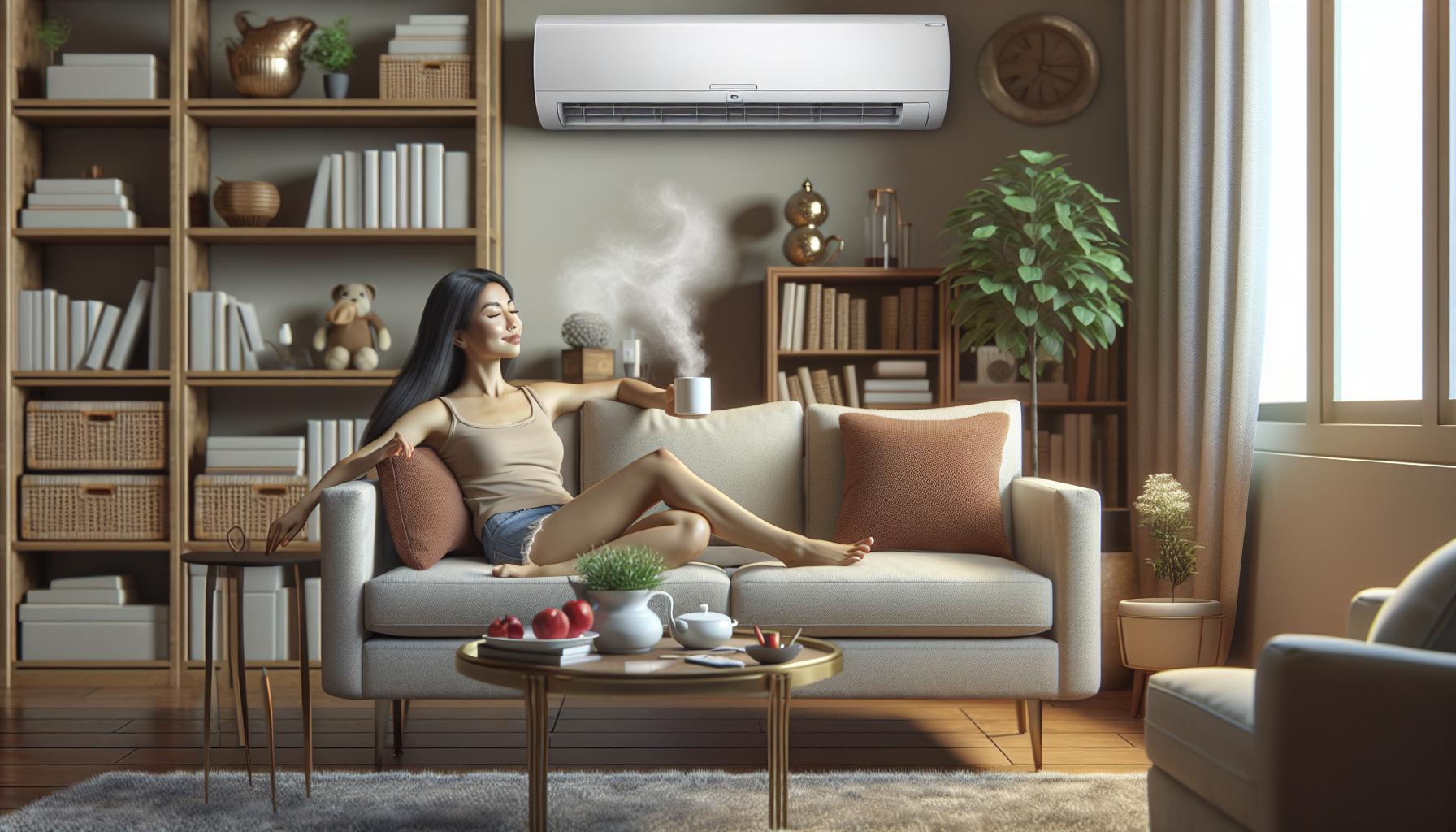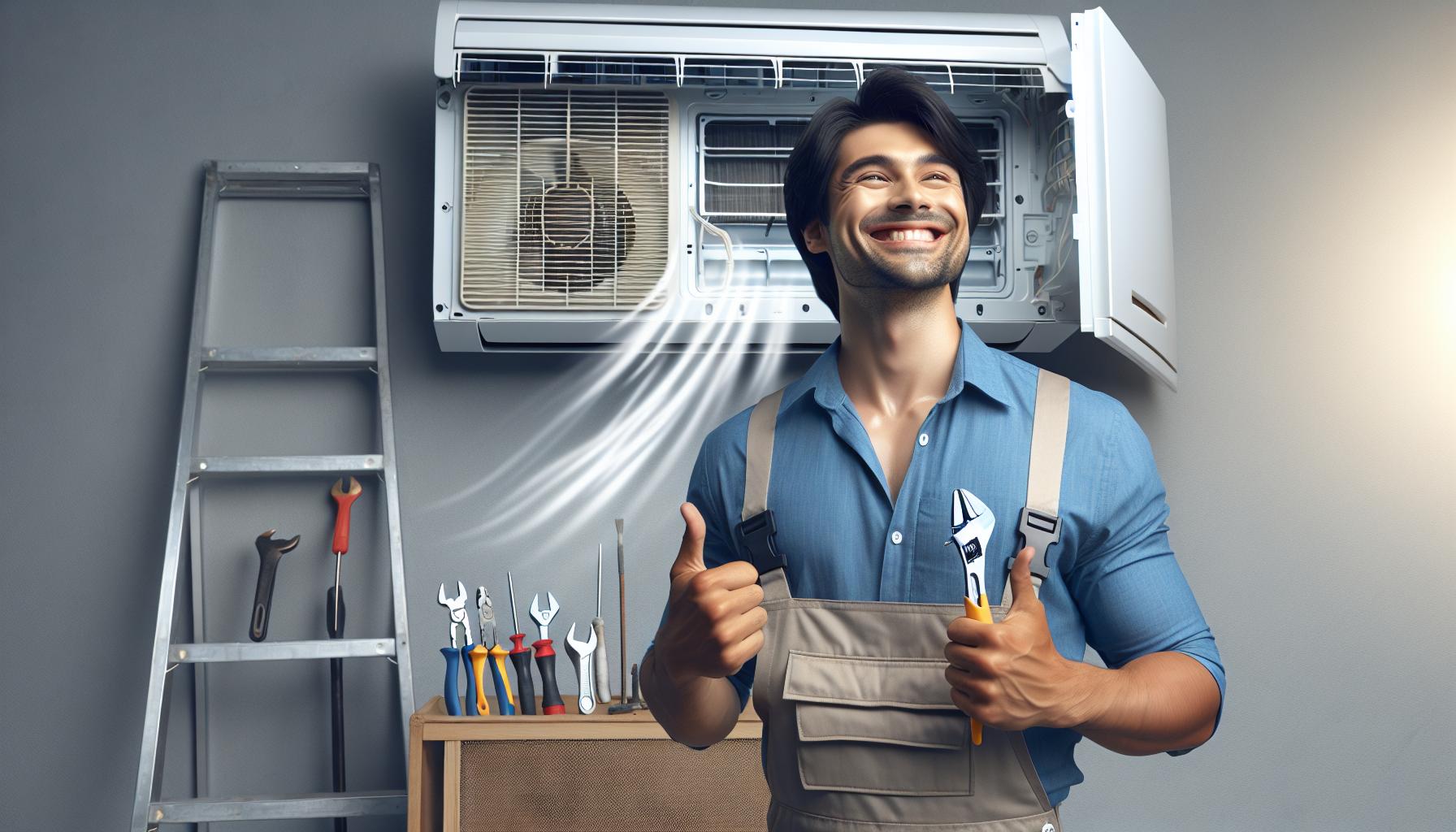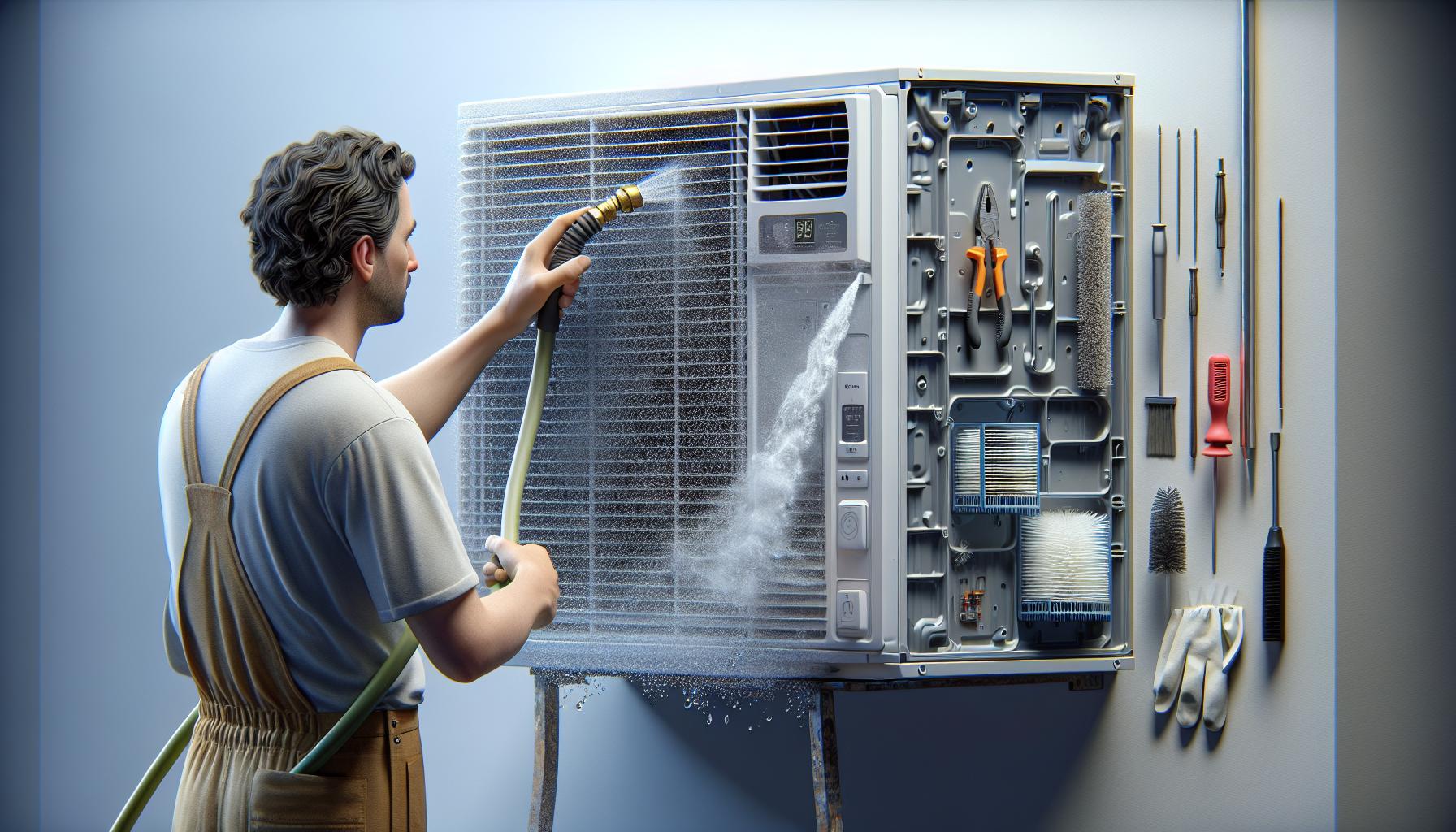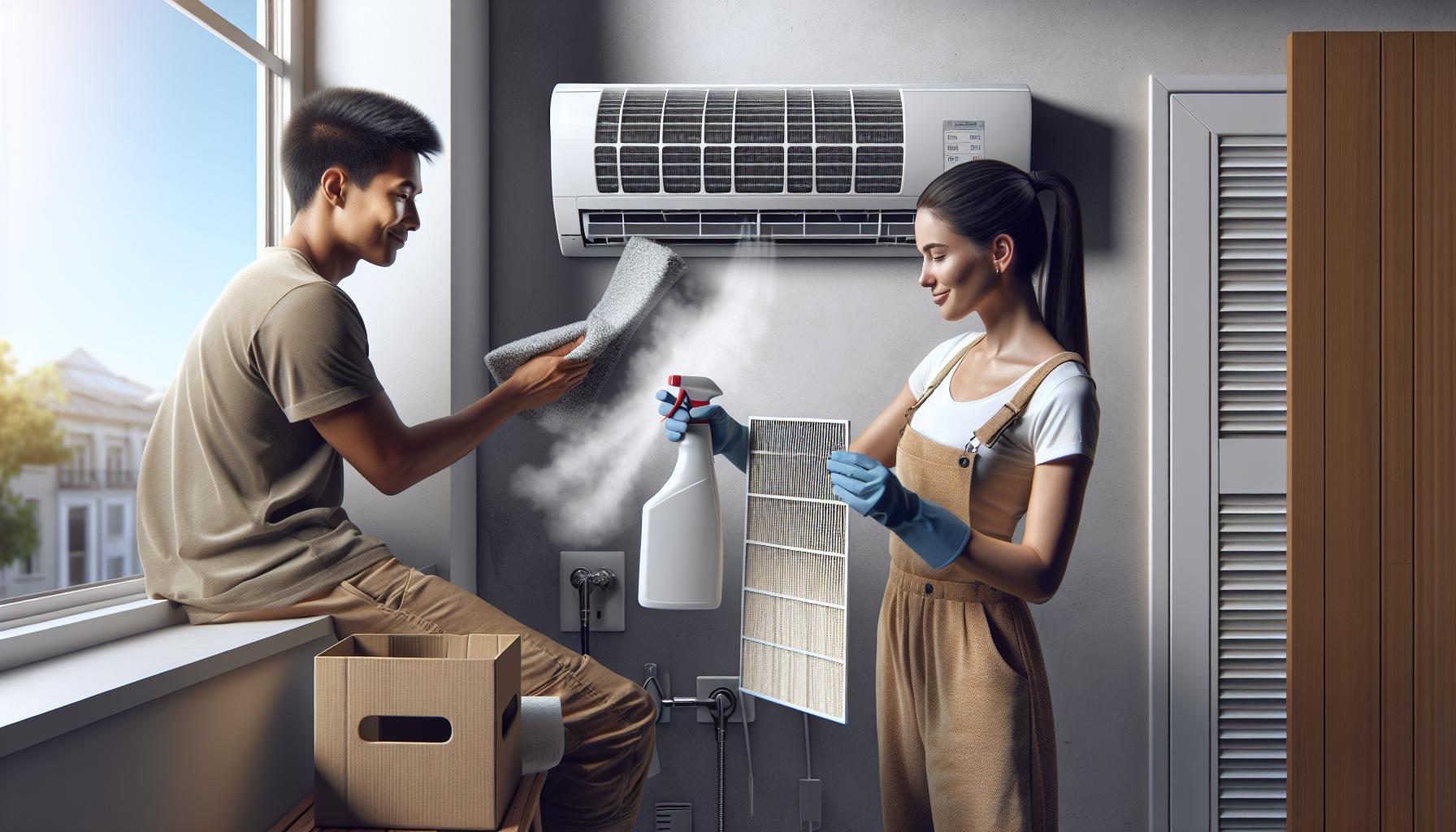Introduction
Let’s face it, when the heat’s on, your air conditioner should be your superhero, stepping up to fight the good fight against sweltering temperatures. But, what happens when your trusted ally is throwing in the towel? Your air conditioner is running, but it’s not blowing any cool air. That’s right – it’s essentially become a glorified fan.
Experiencing A/C Issues
Entering your home, eager for some relief from the scorching heat, only to be greeted by an uncomfortable warmth is definitely not what you signed up for. Tears of frustration prick your eyes as you stand in the doorway, realising the cool embrace you ve anticipated all day is nowhere to be found. The air conditioning system seems to be on and working – but is it really?
Diagnosing the issue becomes your next mission. You start by feeling the vents, hoping to detect a slight chill in the air. But alas, your air conditioner continues to blow out air that’s just, well, air. Not the refreshing cool breeze you were hoping for, but something far more disappointing. Could it be a simple case of a worn-out filter, or are you facing a bigger issue that may need the attention of a professional?
As irritating as this predicament is, understanding how your air conditioning system works and the factors that may disrupt its efficiency can go a long way in troubleshooting and finding a fix for the problem. Because, after all, knowing is half the battle.
Initial Diagnosis
When your air conditioner has metaphorically hung up its superhero cape, refusing to cool your home, the first step is understanding why. This part of your quest involves keen observation paired with a decent dose of suspicion.
Symptoms and Suspicions
You’re familiar with the song and dance: your air conditioner is running, but the much-needed cold air isn’t making its grand entrance. One clue is that the fan is operational, humming along without a hitch. The problem lies with another component: the infamous compressor. It’s lying low, refusing to work. Your suspicions are rising. Could it be a breakdown, a malfunction or is it just having a ‘not today’ moment?
Narrowing Down the Cause
The next stage in this adventure requires some detective work. You’ve done your research, you’ve called up an HVAC technician, and you’ve brainstormed. Out of all possibilities, one perpetrator stands out: the capacitor. Its notorious reputation precedes it, with a knack for suddenly deciding to go on strike. With this lead in mind, you’re ready to investigate deeper into this “cooling crisis.” Interrogating the capacitor and its reluctancy to perform at its prime is the next step in reclaiming your cooling oasis.
Challenges in Seeking Professional Help

Having problems with your air conditioning can be incredibly frustrating, especially during the sweltering heat of summer. When your AC isn’t performing as it should, it’s often more than just a sticky situation; it could also indicate serious problems. During an AC calamity, seeking professional help might seem the logical route to take. But, it’s not always a straightforward journey, with issues such as warranty and service limitations cropping up.
Warranty and Service Limitations
Picture this: a scorching summer’s day, you return home to find your AC not rising to the occasion. It’s a situation no one fancies. Contacting an AC professional might seem an obvious solution. Unfortunately, the process is often not quite that simple. Warranty and Service Limitations can make the journey harder. It’s crucial to remember a warranty is not an eternal guarantee. Maybe your warranty’s expired, maybe the original provider’s skipped the state, maybe the company you relied on for servicing went under. This leaves you in a hot pickle, complicating the professional help route.
Decision to Pursue DIY Repair
Although the warranty conundrum can lead to headaches, it doesn’t mean you’ve run out of options. As they say, when one door closes, another opens. Faced with hefty service costs against a twenty-dollar part, you might contemplate picking up the toolkit yourself. The decision to pursue a DIY repair might be a more appealing route, restoring your chill without straining your wallet. But remember, while it’s appealing, it’s no small feat, especially when dealing with complicated HVAC systems. Nonetheless, when guided aptly, DIY repair can serve as an effective stop-gap until you figure out the professional service conundrum.
The Repair Process

Safety should always be your first concern when diving into any repair job. Mishandling electrical components isn’t only dangerous; it can cause even more damage to your AC unit.
Safety Precautions and Testing
Before working on your air conditioner, ensure it’s powered off at the mains. Next, discharge the unit’s capacitor. This cone-shaped device stores an electrical charge that can deliver a dangerous shock, even when the power is off. After you’ve carefully discharged the capacitor, you’re safe to perform a functionality test. Use a multimeter to check whether current is flowing as it should. At this stage, you’ll need some basic understanding of electrical circuits.
Replacing the Capacitor
Should your multimeter show that the capacitor’s faulty, take a moment to document the existing wiring setup. It’ll make your life easier when installing your new capacitor. Using a pair of needle-nose pliers, carefully remove the connections and then the faulty capacitor. Once it’s out, compare your old capacitor to your new one. They should look similar and have the same ratings. If everything checks out, proceed to install the new capacitor following your documented wiring setup.
Adjustments and Fitment
Quite often, you’ll find that your new capacitor doesn’t fit like your old one did. This hiccup usually isn’t a roadblock, just a minor bump. Creating a new mounting bracket out of sturdy material like metal can solve this problem. Alternatively, zip ties often work just as well. Whatever solution you choose, ensure your new capacitor sits securely. After all, vibrations from a loose fit can cause premature failure.
Remember, while DIY fixes can solve temporary issues, there’s no substitute for professional HVAC repair services when dealing with more complex malfunctions. Stay cool, and get the help you need when you need it.
Post-Repair Testing and Validation

Once you’ve meticulously followed all the appropriate steps in repairing your AC, it’s vital that everything is tested to verify the success of the fix. The song and dance of victory come when the chilling gust of cold air hits you square in the face. We now venture into the final steps of your repair journey: Testing and Validation.
Ensuring Operational Success
Can you hear it? The silky hum of the AC unit working harmoniously? The machine, once filled with a mortal dread of heat, now a glorious harbinger of cool, refreshing air. Upon reinstating and switching on, your air conditioner bursts into life, immediately rewarding you with a gust of icy air. It’s a eureka moment only bested by the sound of a lazy summer afternoon stilled by the uniform rhythm of your working air conditioning unit.
You breathe a sigh of relief as the cold air it spews signals the success of your hard work. Your AC unit is repaired. All that is left for you to do is lean back, bask in your success, and enjoy the rest of your day in the blissful cold. Because, after all, isn’t that what it’s all about? The comfort of your own home, just cool enough to beat the scorching heat.
Your journey doesn’t end here, though you’re now savvier and equipped with the knowledge to handle any future AC mishaps. Be sure to conduct regular maintenance on your unit. Watch out for the common signs of AC distress and remember, prosecuting maintenance is always better than performing repairs. With this newfound knowledge, you’re now one step closer to being the master of your own home, fully equipped to tackle the common issue of your air conditioner not blowing cold air. Your next hot day at work now has a silver lining, knowing that your AC is in top shape, ready to welcome you back home. Let that thought comfort you and know that you are now prepared for whatever heat the summer might bring!
This newfound confidence, that’s your real victory. The ice-cold air, that’s just the cherry on top of the sundae.
Conclusion
So, there you have it. You’re now armed with the know-how to tackle your AC issues head on. Remember, a well-maintained air conditioner is the key to keeping your home cosy and comfortable. Don’t let small issues snowball into larger ones. Stay on top of regular maintenance and you’ll get that satisfying blast of cold air every time you switch on your unit. Keep your cool, stay vigilant, and you’ll soon become an expert at handling your home’s cooling system. After all, there’s nothing quite like the joy of a fully operational AC, right?
Speaking of air conditioners, you might be interested in Air Conditioning on Wikipedia. Additionally, if you’re curious about the inner workings of your HVAC system, check out HVAC on Wikipedia. And for those DIY enthusiasts interested in safety precautions and electrical components, the article on Electrical Safety on Wikipedia could be incredibly informative.
Related Posts:
- Ultimate Guide: How to Clean Your Air Conditioner…
- Fixing a Faulty Duraflame Heater Fan: Troubleshooting Tips
- Troubleshooting Tips: Why Your Amana Air Conditioner…
- Upgrade Home Living with ComfortPlan: Smart Savings…
- Top Barrie Heating and Cooling Tips for Year-Round…
- Staying Healthy: Preventing Sickness from Air Conditioners




